#li gongfu
Explore tagged Tumblr posts
Text
The Legend of the White Snake (2019) First Impression
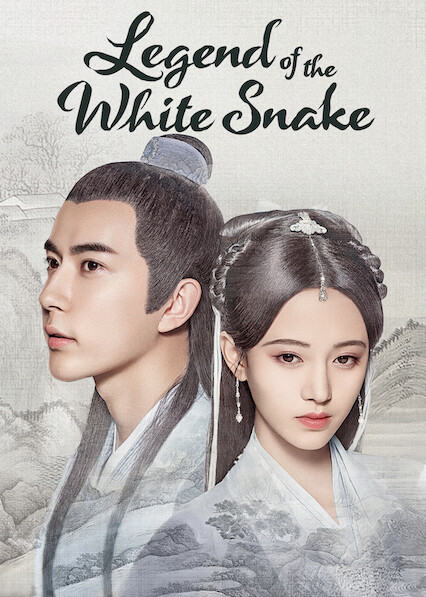
I would like to preface this with the information that I am only somewhat familiar with the original tale and the only other retelling I have experienced thus far was the White Snake animated movie of 2019. For this series I’ll be going off of the English subtitles from Netflix. Additionally I am a queer individual, so expect some queer reading on my part. Mild spoiler warning for the first twelve episodes of the series!
In light of Netflix removing the series soon I have decided to sit down to watch it before then and ended up binging the first twelve episodes in one day. Needless to say I really enjoyed it and would like to get my thoughts and appreciation out here.
To briefly touch on the visuals before getting into the characters and story, the overall vibe I got is comfortable. Like it is colourful but not oversaturated. The costumes are pretty but not over the top, similarly the makeup is clearly there but looks simple enough to not be distracting to me.
The CGI is stylized. It doesn’t try to bend over backwards to be photorealistic and I personally like that. It work for me, it’s, again, comfortable to watch.
Continuing with the characters, the one that stood out to me right away and who I grew to like very quickly is Xiao Qing.
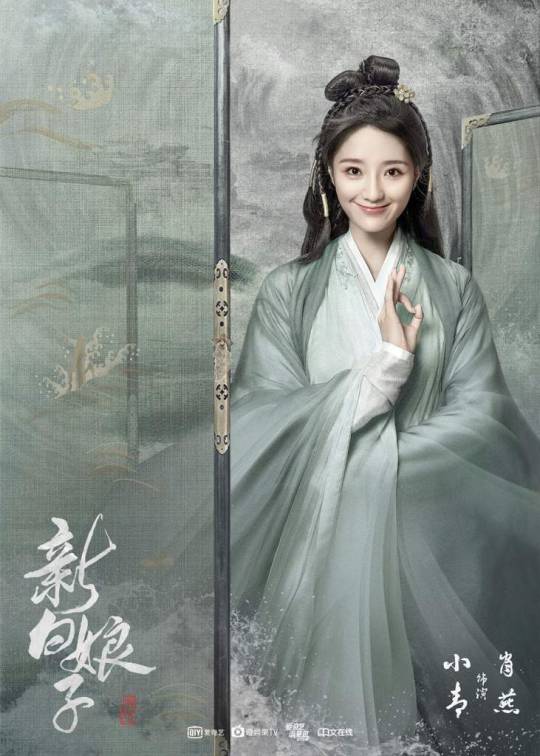
She reads very queer to me starting off with her cultivation of a male human form for so long despite being afab. Now this was due to a desire to protect her mother and attempting to follow established gender roles thusly in a way, though she also had no apparent personal issue with it other than the transformation being a little more difficult, likely because it is a bigger change.
Then she basically flipped to a female human form on a dime out of convenience, so she could accompany Bai Suzhen. Her gender non-conformity persist in that form and all this combined to me paints a picture of her not quite caring about her own gender as such. Nevertheless I wouldn’t put any specific label on her, both because it would not be my place to do so and because I don’t see any for her other than maybe gender non-conform in a general sense.
However you cannot tell me she doesn't have a small crush on Bai Suzhen at least in the beginning.
Aside those things, the small quirk of her enjoying food is very adorable too. So far she has undergone some good character development as well becoming a better person and learning from her elders while still being true to her personality, I quite like that. One would think she’d be an annoying character at first, but she grows into a solid and likeable person.
Now to actually start from the top in terms of characters, beginning with the strong female lead Bai Suzhen.

Not only kind and compassionate, she gained enlightenment through the presence of Guanyin go figure how that might have factored into this, she is also very educated and skilled in martial arts. She is kind but not a pushover, strong willed but not obnoxious. Both a healer and a fighter depending on what is needed at the moment. Capable of handling herself, but not rejecting help when offered. All in all she’s just a great person and a highly likeable protagonist in my eyes.
The supporting ladies like Xu Jiaorong are wonderful as well when they come up, being very helpful where they can.
The male protagonists are nothing to sneeze at either! Of course our male lead Xu Xian is a kind and caring physician already making him quite likeable.
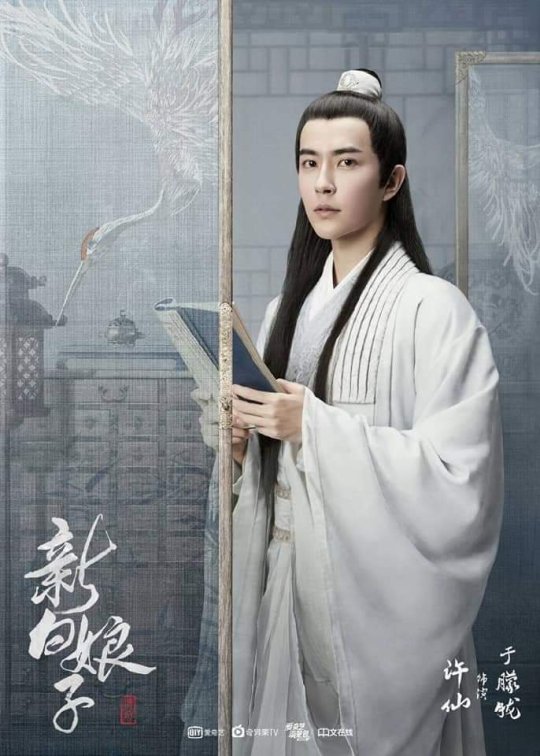
Additionally he falls in love with Bai Suzhen specifically because she is his equal and shares his values. Seeing them work together and help each other as physicians is so cute and really makes you root for them.
He is not without flaw however, much like the rest of the cast, and I am not just referring to his health troubles. While not being a particularly big character arc so far he does grow as a person and his past thus also his past growth is revealed, making his a well rounded character.
Then we have Li Gongfu.

He might not be quite as bright as our leads but is still capable in his job. He is also aware of his own shortcomings and accepts help and advice. And of course he is very loyal to his wife and clearly loves her, which is just so nice to see.
And the four immortals, which are initially with Qing and then Bai Suzhen as well, are great support characters. Funny, caring and useful! The one fight scene where they displayed the abilities of their animal forms was particularly enjoyable to watch.
So far the antagonists have been well balanced usually through an antagonist lady being paired up with antagonist men and both taking equal part in causing trouble. They have also been fleshed out rather nicely with motivations and goals as well as personal grievances.
Plus some were even somewhat sympathetic, particularly the mother who yes has done very bad things undeniably so, but has been pushed to a degree to act like that to begin with. Really a more tragic character than outright evil in my opinion.
Then we have Jin Ruyi of course, who is the classic jealous love rival.
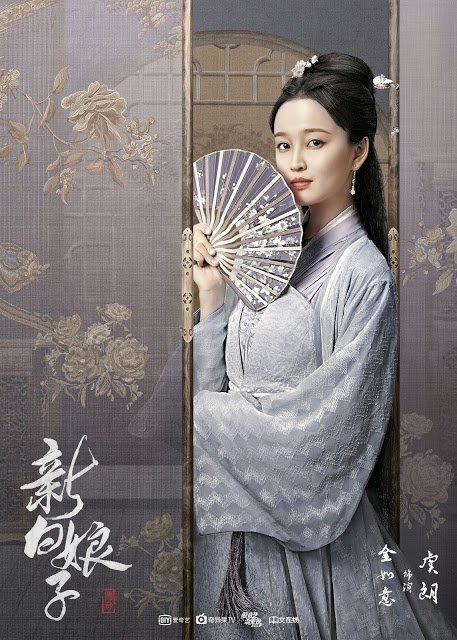
Rather early on I developed hopes for her undergoing character development. Not necessarily in the direction of outright getting along with Bai Suzhen, but maturing, learning to see Xu Xian as his own person and subsequently letting those two be even if she might not like it. And I was pleased to see such an arc beginning towards the later end of the first twelve episodes.
She is not quite where I would like to see her yet, but she clearly has undergone development becoming less spoiled after tragedy struck her. And she can’t be blamed entirely for still being stuck to Xu Xian given how she has been strung along for a scheme by the Hu Kexin.
When speaking about character development we cannot forget about the monk Fahai.
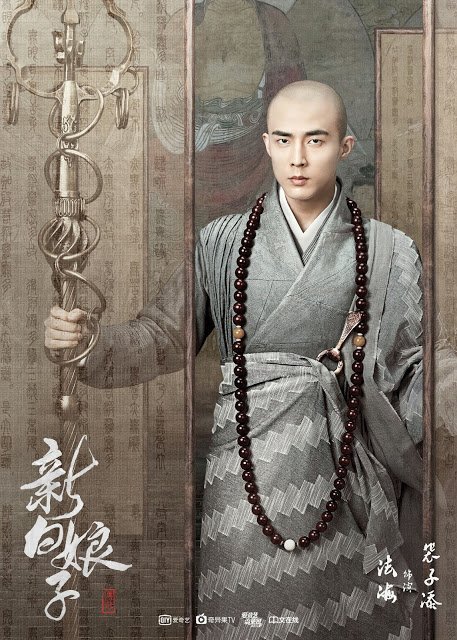
In previous iterations he has been mostly an antagonistic force, but this time around he is here to learn! With a kind master to start him on his journey he still had to make the decision to follow his instructions of not harming the demons if his cane does not deem it necessary. Thusly he is gradually unlearning his prejudice and seeing the nuance in the world more instead of viewing it purely in black and white.
Jingsong, oh Jingsong, he messed up and he messed up big time, a supporting character turned antagonist in my eyes.
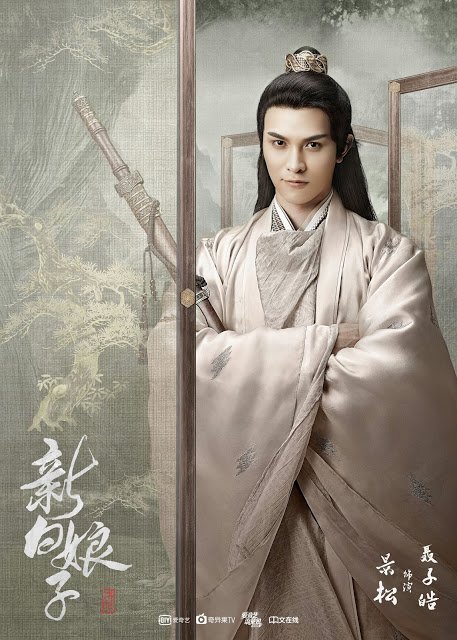
If he had decided to help with Xu Xian’s poisoning, like I believed for a moment he might, I could have seen him getting redeemed. But now that he is still so stuck in his ways and completely disregarding Bai Suzhen’s agency, no matter how ‘well meaning’ he might be, he has lost me. His mouse form is still funny though.
Last but not least shout out to Guanyin, my favourite bodhisattva, always happy to see her.
On the story overall there is not much miscommunication being the cause of problems, it is mainly other people deliberately trying to keep our two leads apart. However the two physicians have clearly growing wise to this and do not trust other peoples’ words about each other so easily anymore.
The theme of nuance is woven throughout those first twelve episodes and I am expecting this to continue. The protagonists have their flaws, some technically good people are shown to do bad things for one reason or another and some antagonists aren’t all bad either and generally have a motivation behind their actions.
In summary while it is mainly a romance drama, there are also plenty of funny moments, intrigue and suspense. I would definitely recommend giving this series a try if one has even a modicum of interest in it.
#The Legend of the White Snake#新白娘子传奇#Bai Suzhen#Xu Xian#Xiao Qing#Jingsong#Jin Ruyi#Li Gongfu#Fahai
2 notes
·
View notes
Text
A Guide to Camellia Sinensis
Dear students, allow me to share a small glimpse into the world of tea, a beverage that has brought comfort and joy to countless souls for millennia. The heart of true tea lies in the Camellia sinensis plant, a highly cultivated plant native to East Asia.

From the lush fields of China to the mist-kissed mountains of India, this plant has been cultivated with great care, its leaves steeped in hot water to create a beverage of unparalleled beauty and complexity.
The cut of the tea leaf plays a significant role in its flavor and character. Whole leaves, broken leaves, fannings, and dust each offer a unique experience, from the robust to the delicate.
Whole leaves, for instance, provide a full-bodied flavor and a long-lasting infusion, making them a popular choice for those seeking a traditional tea experience.
Broken leaves, on the other hand, offer a more intense flavor and a quicker steeping time, making them ideal for those who prefer a stronger brew.
Fannings and dust, the smallest particles of tea, offer a rapid infusion and a concentrated flavor, perfect for those who are short on time or simply desire a strong cup of tea.


Pictured above: Taylor's English Breakfast tea on the left and Taylor's Earl Grey on the right, to demonstrate the visual difference between whole and cut.
The preparation process, from the gentle steeping of Chinese gongfu cha to the robust brewing techniques of Western tea culture, can dramatically alter the taste and aroma of your tea.
Chinese gongfu cha, for example, involves using small, porcelain teapots and cups, and steeping the tea for very short periods of time. This method allows for a more delicate and nuanced flavor profile.
Western tea culture, on the other hand, often involves steeping tea in larger teapots for longer periods of time, resulting in a bolder and more robust flavor.
I invite you, students, to embark on a journey of tea discovery. Explore the vast world of Camellia sinensis, from the subtle nuances of white tea to the bold flavors of black tea. With each sip, you may find a new appreciation for the simple pleasures of life.
Now, let us delve deeper into the popular cuts of tea and their preferred preparation methods.
White Tea:
Cut: Often consists of young whole leaves or buds that have been minimally processed.
Preparation: Gentle steeping in cool water for a short period to preserve its delicate flavor and light color.
Flavor: Known for its subtle, floral, and slightly sweet taste.
Green Tea:
Cut: Typically consists of whole leaves or broken leaves that have been steamed or pan-fried to prevent oxidation.
Preparation: Steeping in hot water for a short period to retain its fresh, grassy flavor and vibrant green color.
Flavor: Varies widely depending on the specific type of green tea, but often characterized by a clean, grassy, or vegetal taste.
Oolong Tea:
Cut: Can vary from whole leaves to broken leaves, but is often partially oxidized, resulting in a unique flavor profile between green and black teas.
Preparation: Steeping in hot water for a longer period, allowing the leaves to fully bloom and release their complex flavors.
Flavor: Offers a wide range of flavors, from floral and fruity to nutty and earthy.
Black Tea:
Cut: Typically consists of broken leaves or fannings that have been fully oxidized.
Preparation: Steeping in boiling water for a longer period to extract its strong, bold flavors.
Flavor: Known for its rich, full-bodied taste, often with notes of chocolate, caramel, or spice.
Each type of tea offers a unique experience, and the best way to appreciate their individual qualities is to experiment with different preparation methods and steeping times. So, dear mortals, I encourage you to embark on a journey of tea discovery and savor the beauty of Camellia sinensis.
Various definitions:
First Flush: The first cuttings of the plant in early spring, often yielding a higher quality tea.
Silver Tips: A white tea made from the delicate buds of a tea plant.

Below is a table indicating steep times:


Notes:
This table provides a general guideline. Steeping time and temperature can vary depending on the specific tea and desired flavor strength.
Some teas, like white tea, benefit from multiple short infusions instead of a single long steep.
Experiment with different steeping times and temperatures to find your perfect cup.
Water temperature is crucial. Using water that is too hot can burn the tea leaves, resulting in a bitter taste.
The more water is heated, the more oxygen is released from the water. The oxygen is important to bring out the flavor of your tea, so please be vigilant as to not exceed your water temperature. A great tool for novices and experts alike would be a temperature controlled electric kettle.

In addition to the cut of the tea leaf and the preparation method, the quality of the water used can also significantly impact the taste of your tea. Soft, mineral-free water is generally preferred for tea brewing, as it allows the delicate flavors of the tea to shine through without being overwhelmed by strong mineral tastes.
A good starting point would be mountain spring water or filtered water, specifically with as neutral a pH as possible. Distilled water is not recommended, although neutral in pH, lacks the oxygen needed to bring out the sublime flavor in tea.
Hard water, on the other hand, contains high levels of minerals, such as calcium and magnesium. These minerals can react with the tannins in tea, creating a bitter or astringent taste. While some people may enjoy the added flavor complexity that hard water can impart, it is generally best to use soft water for optimal tea flavor.
If you live in an area with hard water, consider using a water filter or a mineral remover to soften the water before brewing your tea. This can make a noticeable difference in the taste and overall quality of your beverage.

Next subject will include flavor infused teas such as Jasmine, Earl Grey, and Fruit teas.

5 notes
·
View notes
Text
casa vacanze in sardegna
The Art and Tradition of Yixing Zisha Teapots: A Treasure for Tea Lovers
Tea culture has been an integral part of Chinese heritage for centuries, and at the heart of this tradition lies the exquisite Yixing Zisha teapot. Known for its superior craftsmanship and unique material, the Yixing Zisha teapot has earned its place as a must-have for tea connoisseurs worldwide. Whether you are a casual tea drinker or a serious collector, understanding the artistry behind these teapots will enhance your appreciation for Chinese tea culture.
What is Yixing Zisha?
Yixing Zisha, or Yixing purple clay, is a special type of clay found in Yixing, Jiangsu Province, China. This rare and mineral-rich clay is renowned for its porous nature, which allows it to absorb the flavors of tea over time. As a result, tea brewed in a Yixing Zisha teapot develops a richer and more refined taste with each use.
The name “Zisha” translates to “purple sand,” but this clay comes in various colors, including purple, red, green, and yellow. Each type of clay has distinct properties, making them suitable for different tea varieties.
The History of Yixing Zisha Teapots
The origins of Yixing Zisha teapots date back to the Ming Dynasty (1368–1644). During this period, scholars and tea enthusiasts sought refined tea brewing methods, leading to the rise of Yixing Zisha craftsmanship. Artisans in Yixing developed teapots that not only enhanced the tea's flavor but also became prized works of art.
By the Qing Dynasty (1644–1912), these teapots had gained international recognition, admired for their elegance, durability, and functionality. Today, a well-crafted Yixing purple clay teapot is considered an essential part of traditional Chinese tea ceremonies.
Why Choose a Yixing Zisha Teapot?
A Yixing Zisha teapot offers numerous advantages over other teapots made from porcelain or glass. Here are some key reasons why tea lovers prefer them:
1. Porous Nature Enhances Flavor
The unglazed clay absorbs tea’s essence, enhancing the flavor over time. With continued use, the teapot develops a natural seasoning, making each brew richer and smoother.
2. Heat Retention and Distribution
Yixing Zisha clay retains heat exceptionally well, ensuring that the tea remains warm for longer. Its even heat distribution allows for a perfect infusion, bringing out the best characteristics of different teas.
3. Aesthetic and Artistic Value
Each Yixing Zisha teapot is handcrafted, making every piece unique. From simple, elegant designs to elaborate, sculpted masterpieces, these teapots reflect the artistic skills of their creators.
4. Durability and Longevity
With proper care, a Yixing purple clay teapot can last for generations. The material is sturdy and resistant to cracking, making it a long-term investment for tea enthusiasts.
How to Choose the Right Yixing Zisha Teapot
When purchasing a Yixing Zisha teapot, consider the following factors to ensure you get an authentic and high-quality piece:
1. Clay Type
Different types of Zisha clay are suitable for different teas:
Zini (Purple Clay) – Ideal for black tea, oolong, and pu-erh.
Hongni (Red Clay) – Works well with green and white teas.
Duan Ni (Yellow Clay) – Versatile and enhances delicate tea flavors.
2. Craftsmanship and Authenticity
Authentic Yixing Zisha teapots are handmade by skilled artisans. Look for hallmarks, engravings, and seals that indicate the teapot’s origin and the artist’s signature.
3. Size and Shape
The size and shape of the teapot should complement the type of tea you prefer. Smaller teapots are excellent for gongfu tea brewing, while larger ones are better for sharing multiple servings.
How to Use and Care for Your Yixing Zisha Teapot
To maintain the quality and longevity of your Yixing purple clay teapot, follow these essential care tips:
1. Seasoning the Teapot
Before first use, rinse the teapot with warm water, then steep a mild tea (such as green tea) to remove any residual clay particles.
2. Use One Teapot for One Type of Tea
Due to its porous nature, a Yixing Zisha teapot absorbs tea flavors. It is recommended to dedicate each teapot to a single tea type to preserve its pure taste.
3. Cleaning Without Detergents
Never use soap or detergents. Simply rinse the teapot with warm water and let it air dry.
4. Store Properly
Keep your teapot in a dry, well-ventilated area. Avoid placing it in direct sunlight, as extreme temperatures can affect the clay’s properties.
Where to Buy Authentic Yixing Zisha Teapots
For those looking to purchase an authentic Yixing Zisha teapot, visiting a reputable Chinese tea shop is the best option. Many tea shops offer handcrafted teapots, often providing insights into their origin and artist. Additionally, online specialty stores can be a convenient way to explore different designs and clay types.
Conclusion
A Yixing Zisha teapot is more than just a vessel for brewing tea—it is a piece of history, a work of art, and an essential part of traditional Chinese tea culture. Whether you are an avid tea drinker or a collector, investing in an authentic Yixing purple clay teapot will elevate your tea experience and connect you to centuries of craftsmanship.
Next time you visit a Chinese tea shop, take a moment to explore the beauty and uniqueness of Yixing Zisha teapots. With the right choice and proper care, your teapot will become a cherished companion for your tea rituals, offering a deeper appreciation of the world of tea.
0 notes
Text
Discover the Timeless Art of Yixing Teapots: Authentic Yixing Teapot Sets Made from Purple Clay
Tea culture is a cherished tradition in China, and at the heart of this practice is the Yixing teapot set, renowned for its unique craftsmanship and the ability to enhance the flavors of tea. Made from the distinctive purple clay found only in the Yixing region of Jiangsu Province, China, these teapots are more than just functional items—they are works of art that connect tea drinkers to centuries-old traditions. In the USA, tea enthusiasts are increasingly discovering the charm and benefits of owning an authentic Yixing teapot, appreciating its unparalleled qualities and historical significance. Join us as we delve into the world of Yixing teapots, exploring their origins, unique characteristics, and why they are a must-have for every tea lover.
The Origins of the Yixing Teapot
The Yixing teapot set dates back to the Ming Dynasty (1368–1644), a period when tea culture in China evolved from grinding tea leaves into powder to brewing loose leaf tea. This shift created a demand for vessels that could enhance the brewing process, and thus the authentic Yixing teapot was born. The unique qualities of Yixing clay made it the perfect material for crafting teapots that not only preserved heat but also enriched the flavor of the tea.

Purple clay, also known as zisha, is the most famous clay used in Yixing teapots. This clay is rich in iron oxide, minerals, and other trace elements, giving it a distinctive reddish-brown color. Unlike other types of clay, purple clay is porous yet non-absorbent, allowing it to retain the essence of the tea without becoming saturated with flavor. Over time, an authentic Yixing teapot develops a patina that enhances the taste of tea, creating a personalized brewing experience unique to each user.
What Makes an Authentic Yixing Teapot Special?
Owning an authentic Yixing teapot is like having a piece of Chinese history in your home. These teapots are handcrafted by skilled artisans who use traditional methods passed down through generations. Each Yixing teapot set is unique, reflecting the individuality of the artisan who made it. Here are some of the qualities that make Yixing teapots special:
Unique Material: The key to the Yixing teapot’s fame lies in its purple clay, which is known for its porous structure. This allows the teapot to "breathe," maintaining the temperature of the tea while enhancing its aroma and flavor. The clay absorbs the oils from the tea, seasoning the teapot over time and creating a richer taste with each use.
Handcrafted Excellence: Each Yixing teapot set is made by hand, with artisans carefully shaping, carving, and decorating the clay before firing it at high temperatures. This craftsmanship ensures that no two teapots are exactly alike, making each one a unique piece of art.
No Glaze: Unlike other ceramic teapots, Yixing teapots are unglazed, which means the tea comes into direct contact with the natural clay. This allows the teapot to absorb the tea’s essence, improving the flavor of subsequent brews. It’s recommended to dedicate one Yixing teapot to a specific type of tea, such as oolong, pu-erh, or green tea, to preserve the purity of flavor.
Heat Retention: The thick walls of a purple clay teapot provide excellent heat retention, ensuring that the tea stays warm throughout multiple infusions. This makes Yixing teapots perfect for gongfu-style brewing, which involves multiple short steeps to bring out the complex flavors of the tea.
How to Use and Care for Your Yixing Teapot Set
An authentic Yixing teapot is not just a tool; it is a cherished item that requires proper care to maintain its quality and enhance its performance. Here are some tips on how to use and care for your Yixing teapot set:
Seasoning Your Teapot: Before using your new Yixing teapot, it’s essential to season it. This process involves boiling the teapot in water to remove any residual clay dust and then brewing several pots of tea without drinking the tea. This helps the teapot start absorbing the tea’s flavors, preparing it for regular use.
Dedicated Use: To fully enjoy the benefits of purple clay, it’s recommended to dedicate your Yixing teapot to one type of tea. The porous nature of the clay absorbs the oils and flavors of the tea, which will enhance future brews. Switching between different types of tea can result in a mixture of flavors that might not be desirable.
Cleaning: Never use soap or detergent to clean your Yixing teapot. The clay will absorb these chemicals, affecting the taste of your tea. Instead, rinse the teapot with hot water after each use and allow it to air dry naturally. If necessary, use a soft brush to gently clean the interior without scrubbing too hard.
Storage: Store your Yixing teapot set in a safe, dry place away from strong odors that could be absorbed by the clay. Keeping the teapot in a well-ventilated area will help maintain its natural characteristics and prevent any unwanted smells from permeating the clay.

The Benefits of Using a Yixing Teapot Set
Using an authentic Yixing teapot offers a range of benefits that enhance the overall tea-drinking experience. Here’s why tea enthusiasts in the USA and around the world love their Yixing teapots:
Enhanced Flavor: The porous nature of purple clay allows the teapot to absorb the essence of the tea, creating a richer, more complex flavor over time. Each brew adds a new layer of depth to the tea, making every cup a unique experience.
Aesthetic and Cultural Connection: Owning a Yixing teapot set is not just about the practical benefits—it’s also about connecting with a long-standing cultural tradition. The beauty and craftsmanship of these teapots bring a sense of elegance and authenticity to your tea rituals.
Eco-Friendly: Yixing teapots are made from natural clay without the use of harmful glazes or chemicals. This makes them an environmentally friendly choice for tea lovers who care about sustainability.
Durability: With proper care, an authentic Yixing teapot can last a lifetime. The high-quality purple clay is resilient and resistant to cracking, making it a reliable companion for daily tea brewing.
Choosing the Right Yixing Teapot Set
When selecting an authentic Yixing teapot, it’s important to consider the type of tea you most enjoy, the size of the teapot, and the aesthetic qualities that appeal to you. Yixing teapots come in various shapes and sizes, each designed to enhance specific types of tea. Smaller teapots are ideal for gongfu brewing, where multiple infusions of a small amount of tea are made, while larger teapots are better suited for serving guests.
At Acala Tea Company, we offer a curated selection of Yixing teapot sets made from the finest purple clay, ensuring authenticity and quality. Whether you are new to Yixing teapots or a seasoned collector, our range of teapots offers something for everyone, allowing you to explore the full potential of your tea.

Conclusion: Embrace the Tradition of Yixing Teapots with Acala Tea Company
The Yixing teapot set is a timeless piece that brings a touch of Chinese culture into your home. With its unique ability to enhance the flavor of tea, the authentic Yixing teapot made from purple clay is a must-have for any tea enthusiast in the USA. By investing in a Yixing teapot, you are not only acquiring a beautiful piece of art but also connecting with a centuries-old tradition that celebrates the art of tea.
Explore our collection of Yixing teapots at Acala Tea Company and discover how these extraordinary teapots can transform your tea-drinking experience. Whether you are savoring a quiet moment alone or sharing tea with friends, an authentic Yixing teapot will elevate your tea ritual to new heights.
0 notes
Text
Da Hong Pao and Shui Xian Teas: Savoring the Rich Heritage of Wuyi's Finest
Nestled within the fog-laced cliffs of the Wuyi Mountains, two exceptional teas—Da Hong Pao and Shui Xian—blossom amidst ancient lore and the whisper of aged stones. These teas, steeped in a tradition as deep and rich as the earth from which they spring, offer a profound journey into the heart of Chinese tea culture. Each sip of Da Hong Pao and Shui Xian is not merely a drink but a celebration of history, artistry, and the sublime complexities of nature.
Da Hong Pao: The Imperial Robe of Teas
Da Hong Pao Tea, often translated as "Big Red Robe," is the more illustrious of the two, woven into the fabric of Chinese tea legend. The story goes that this tea saved the life of an emperor's mother, leading the grateful son to cloak the original tea bushes in his own majestic red robe. Whether myth or fact, the legacy of Da Hong Pao is as rich as its flavor. Cultivated from these ancient, now nearly extinct mother bushes, Da Hong Pao carries a regal presence in each leaf.
The taste of Da Hong Pao is a bold symphony of flavors. Known for its robust body and lingering sweetness, it carries hints of stone fruits and a slight, pleasing bitterness, reminiscent of dark chocolate. The tea's complex profile is rounded out with a woody aftertaste that speaks to its mountainous origins, offering layers of discovery with each brew. The preparation of Da Hong Pao is a careful art, requiring precise temperature control and timing to unlock its full, opulent flavor.
Shui Xian: The Ethereal Whisper
Shui Xian Tea, translating to "Water Sprite," offers a more understated but equally captivating experience. This tea is like a gentle echo of the mountain mists, with a subtler flavor profile that invites contemplation. It is often described as having a floral and slightly sweet taste, with a smoothness that makes it accessible, yet deeply satisfying to those who seek serenity in their cup.
The beauty of Shui Xian lies in its versatility and forgiving nature, making it a beloved choice for both novice tea drinkers and seasoned connoisseurs. Its brew is lighter than that of Da Hong Pao, with a golden hue that promises warmth and comfort. The aroma is richly floral, hinting at orchids and the lush greenery of its native landscape, inviting a moment of peace with every sip.
Cultural Significance and Brewing Rituals
Both Da Hong Pao and Shui Xian are steeped in the Gongfu tea ceremony, a practice that emphasizes mindfulness and the art of tea as a meditative ritual. This ceremony is an intricate dance of water and leaf, where time slows and each movement is a gesture of respect to the tea's heritage. The Gongfu ceremony uses small teapots and multiple short infusions to extract the full range of flavors, celebrating the tea's evolving taste across several cups.
These teas are more than beverages; they are cultural artifacts, preserving the essence of a region known for its exceptional tea production. Da Hong Pao, with its imperial connections, is often reserved for special occasions, reflecting its status as one of the world’s most coveted teas. Shui Xian, while also highly regarded, is more commonly enjoyed, making it a perfect daily companion for those seeking a moment of tranquility.
A Toast to Tranquility and Tradition
In Da Hong Pao and Shui Xian, we find not just tea, but a gateway to the past and a testament to the craftsmanship of Wuyi’s tea artisans. These teas invite us to pause and appreciate the slower rhythms of life, offering a cup filled with more than just warmth—they offer a moment of connection to the timeless traditions of the Wuyi Mountains. Whether you are drawn to the bold majesty of Da Hong Pao or the serene whispers of Shui Xian, each tea offers a unique path to discovering the profound depths of fine Chinese tea.
0 notes
Text
Name: Mr. Barzum Daemir Ancestor: The Advanced Strife Specibus: ironkind Blood Color and Sign: Teal; Libpio Handle: artemisCards Lusus: kaka ma Pronouns: ce/cir/cirs/cirself Age: 8 sweeps Interests: backgammon and gongfu tea Sexuality: This person hasn't, would, and never would think about sexuality. Class: Maid Land: Land of Lies and Depth, an open place, with vast Jeweled Lacerta consorts. It is a place full of redacted and oceans of drool. Oceanus is lonely. Quirk: speak with perfect diction via roll-a-troll https://ift.tt/V62MLef, do as you please
0 notes
Text
Legend of the White Snake - Episode 36 Final Episode

I don’t know if I will survive this.
Xiao Qing meets with her father and he thinks she’s Furong (Xiao Qing’s mother). He hugs her and promises to never leave her again. But Xiao Qing pushes him away and tells him he has no right to call her mother’s name. There’s no time for this Xiao Qing. You have to save Suzhen. He then tells her she has no place in this palace. She promises this is the last time she ever comes to see and steal the artefact.
Okay I am so stressed out that I have to pause the episode every thirty seconds. I am so afraid that something bad will happen. I need a happy ending. I don’t care if it’s not satisfactory. I just want a happy ending.
Seeing Suzhen having so much trouble fighting Fahai... no... Xu Xian... I hope he doesn’t lose it to the demon.
THANK GOD XIAO QING CAME. But... what? It’s not helping at all. That thing she brought is just going to flood everything. That’s of no use...
Fahai tells Suzhen that Xu Xian became one with the inner demon and that this is choice, why won’t she respect his choice. Fahai begs her, she can even kill her after if she wants, but That’s Xu Xian’s choice.
Omg. Suzhen, don’t you think about Jiaorong and Gongfu? Do you want them to die too?
the immortals come to punish the demons and Xu Xian, to protect Suzhen says it’s him. He’s the one causing trouble. No. I can’t. This is torture. He gets struck by lightning. Suzhen rushes to him, she also gets struck by lightning and she begs for forgiveness, hadn’t she fallen in love with him and tried to be with him, he wouldn’t be hurt like this. But he says his biggest happiness in this life was to meet her.
Okay... so it looks like they are both going to die together, which would be really sad, but at least an ending in which they would be together and I would like that. However, just then, she’s about to give birth. Wow. That’s a little early. Anyways, seeing that the baby is an immortal going down for a mortal trial, the other immortals leave. And it seems that because he was struck by lightning, Xu xian’s okay? Well, all of this is weird.
Then Xiao Qing’s father come and wants to punish Suzhen. But Xiao Qing is like, no! If you want to kill somebody, kill me instead. She cuts her wrist. Suzhen rushes. And Then. Wow. Guanyin herself comes again. She pushes the water away with spraying little bubbles. Suzhen acknowledges her wrongdoings and is willing to pay with her life. But then, Xu Xian won’t, he says he’ll take the punishment for her, in this life and in the next too.
Wow. It ends being Xiao Qing’s dad asking for punishment seeing the love between Suzhen and Xu Xian. What the hell? how weird is this? Can we know if Xu Xian and Suzhen can stay together? I don’t really about the rest. I need that stress off my chest and there’s like... 26 minutes left to the episode. I can’t stand it for that long.
Okay, so Suzhen is sent to read the rites inside Leifeng pagoda and she won’t be able to go out. Xu Xian runs after her but he can’t be with her.
Xiao Qing’s dad wants to take her back with him. Xiao Qing though blames herself that Suzhen and Xu Xian are forced to be apart. She promised to go cultivate with Guanyin until the Leifeng pagoda falls down. Then, she will come back.
I am so heart broken. Honestly. They never truly got to be together. And now Xu Xian is leaving his baby behind in Jiaorong’s care. I mean, I understand he’s all sad and all, but shouldn’t he at least take care of the baby? That’s what Suzhen would want...
Anyways, years goes by and Shilin is a really filial son. On his birthday, his cousin Bilian comes to send him some noodles, but he only thinks of his mother being alone.
Wow. Suzhen and Xu Xian’s son. As he hears that Suzhen is stuck in Leifeng Pagoda until the tower falls down and the West Lake dries up, he decides to go destroy the tower and empty the West Lake by himself. Such a filial son. When Jiaorong tries to stop him, he says that’s like the story of Yu Gong who wanted to move a mountain and even if it seemed impossible at first, he succeeded. For those who don’t know, it’s a Chinese idiom which means that when there’s a will, there’s a way. People were thinking that Yu Gong was stupid for trying to move the mountain, but he did it anyways. Bilian offers to help and then many town’s people also decide to give him a hand because they remember how Suzhen and Xu Xian helped them so much.
Wow. So Bilian and Shilin are in love? They are cousin... I am a little uncomfortable with that... Anyways, Shilin studies to pass the imperial exams. And he manages to. He holds the ceremony near the West Lake and asks for his mother to come out. Then a dragon comes out and sucks the water of the lake. It’s Xiao Qing. The tower slowly falls down. Suzhen finally comes out.
And when Xu Xian comes back, she’s right there waiting for him at the pier. And they hold hands. And the end.
This is... Well, the ending seems a little bit rushed, but I am happy with it knowing that they can resume their life together. Thanks to their son. I just wish they had a little more happy moments together.
And I must say... the last episodes were just so stressful for me. It tired me out so much. I am going to miss this drama, I really liked Xu Xian and Xiao Qing, but I am glad I am done with it. Too much stress for me TT Too much heartbreak too. People get close to dying way too often. I am glad I spent the time though to watch this! Thanks for reading!
#legend of the white snake#xin bai niangzi chuanqi#retake#2019#ju jingyi#bai suzhen#alan yu#yu menglong#xu xian#xu hanwen#pei zitian#fahai#xiao yan#xiao qing#zeng yunzhen#xu jiaorong#li lin#li gongfu#xianxia#xianxia drama#cdrama#c-drama#chinese drama#drama recap#drama review#drama reaction
19 notes
·
View notes
Photo
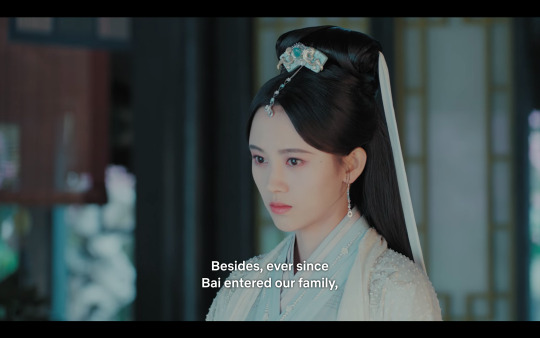
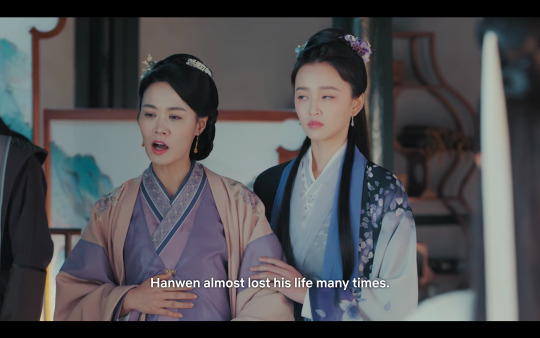
I AM HOWLING. THE REASON HE’S (almost) DIED SO MANY TIMES IS BECAUSE OF THAT B*TCH HOLDING YOUR DAMN ARM!!
I kept hoping (early on in the show) that Ruyi would get some character development. Possibly after that emotionally traumatic event that happens in the beginning. BUT NO. SHE’S STILL THE SAME SELFISH IMMATURE B*TCH THAT CAN THINK OF NOTHING BUT HANWEN, AND HOW HE HAS TO BE HER MAN.
#Legend of the White Snake#Netflix#Jin Ruyi#Jiarong Xu#Xu Xian#Hanwen#Gongfu Li#Bai Suzhen#Xiao Qing#Xiaoqing#Chinese Drama
50 notes
·
View notes
Photo
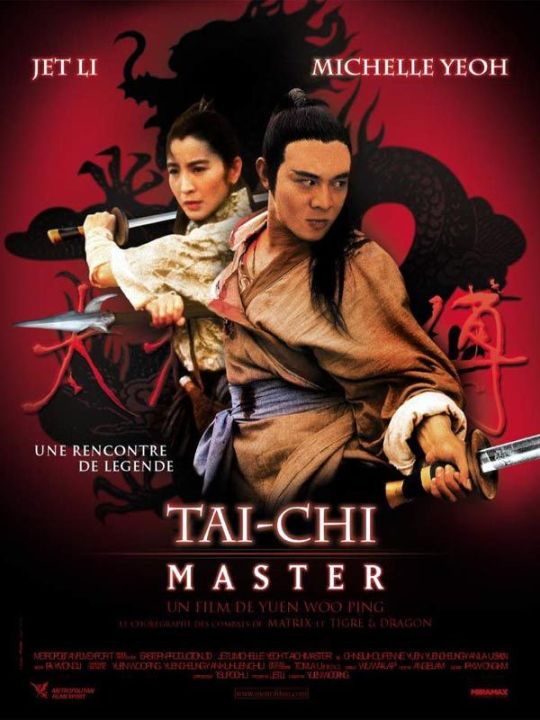
The Tai Chi Master (1993) Directed by the legendary Yuen Woo-Ping. Nice fights and flights ;). Jet Li is breathtaking but th poor antagonist Chin Siu-Ho also works hard. Michelle Yeoh and the other girls <3.
#the tai chi master#jet li#michelle yeoh#yuen woo ping#chin siu ho#twin warriors#wuxia#kungfu#gongfu#hong kong cinema#asian cinema
1 note
·
View note
Text

Time for Archer/post Clocktower Shirou headcanon!
At one point, either during one of his vacations at the Clock Tower or soon after he left, Shirou went to China to study Jingluo. It is a concept of traditional Chinese medicine that studies the paths throughout the “Qi” energy flows, known as “Od” among the western mages. It is slightly different from the mana , as it is around the life-force itself. With this knowledge, Shirou is able to use the structural analysis aspect of his magecraft on the human body far more efficiently.
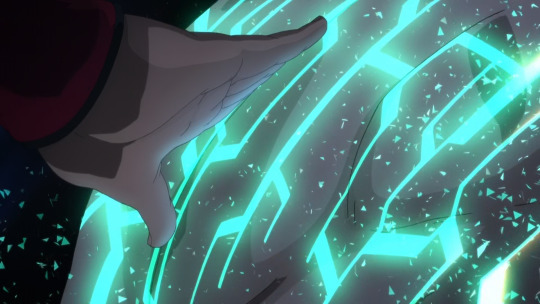
Archer displayed this knowledge during the UBW route when assisting Shirou with his magic circuits and when knocking Rin out during the kidnapping. Archer Alter also displays this knowledge during the Se.Ra.Ph. event.
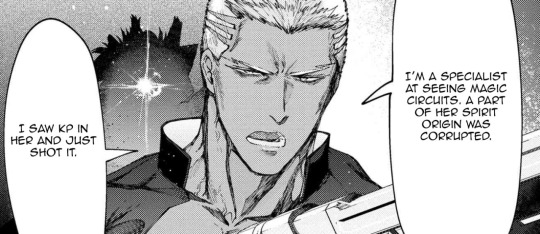
He also picked a few other knowledge, like a few Bajiquan techniques to be used in conjunction with his Projections or if momentarily disarmed for some reason; and Gongfu Cha techniques for preparing the perfect tea, along with techniques like the gaiwan (also known as zhong). Shirou also studied a few concept of Chinese aesthetics, Zen, Confucianism and Taoism, understanding better the concepts of Chinese blacksmiths such as Gan Jiang and Mo Ye.
Another instance in which Archer displays his knowledge on Jingluo and Bajiquan is when he faces Li Shuwen in Fate/Extra, his training on the later allowed him to dodge enough a surprise attack in the Arena that could have been fatal, along with his own Mind’s Eye. And thanks to his knowledge on the former he could tell the exact effect it was having on his magic circuits.
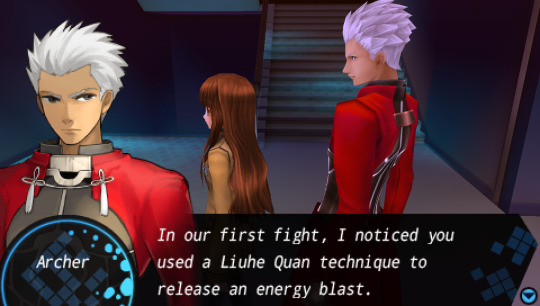
3 notes
·
View notes
Text
Gongfu Cha or Chinese Tea Ceremony
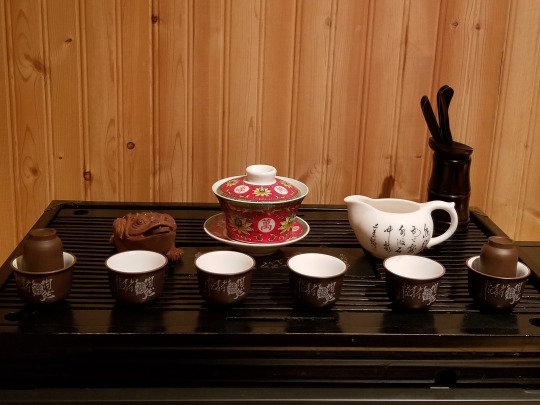
In the western tea community you don’t very often hear of gongfu brewing. Often in western tea this type of brewing in practiced by purists or traditional tea drinkers. But what is gongfu brewing?
Gongfu brewing is one of the oldest methods of preparing high quality loose leaf teas. It is believed to have originated in China around the 18th century. Where exactly it began has been up for debate by scholars for some time. Some believe it originated in the Fujian province of China while others believe it originated in Guangdong, China.
This method of brewing is an art form that many tea masters have studied for years to perfect. The goal with gongfu cha is to extract the best and purest flavor possible. This method of brewing not only allows you to properly taste the full essence of the tea but also to taste it over a number of infusion. This allows you to get a sense of how the flavor of the tea changes over each infusion. One of the biggest differences between western brewing and gongfu brewing lies in the amount of tea used. Western brewing goes by the rule of using less tea, and steeping it longer over a single infusion. Gongfu on the other hand goes by the rule of using more tea, steeping for only a few seconds, and steeping again over numerous infusion.
As with any kind of brewing, water quality and temperature play a major key roll in extracting the best flavor of your tea. When using this brewing method, you should avoid using highly filtered waters or distilled waters, as these types of water produce a flat brew. Locally sourced or bottle spring water is preferred as it is said that the minerals of the water aid in producing a better brew.
Water temperature is also a major factor in gongfu brewing as using too high of a temperature can harm delicate teas and therefore produce a bitter brew. At the same time using too low of a temperature can also cause a weak tasting brew. See my recent Tea Newbie blog regarding water temperatures as an aid.
The other thing you will find in gongfu brewing is several additional tools not commonly found in western brewing. Along with this the brewing vessel and cups used are of much smaller size. I will be making blogs in the coming days about the reason for the difference in size as well as all the tools used in gongfu cha and the purpose they serve.
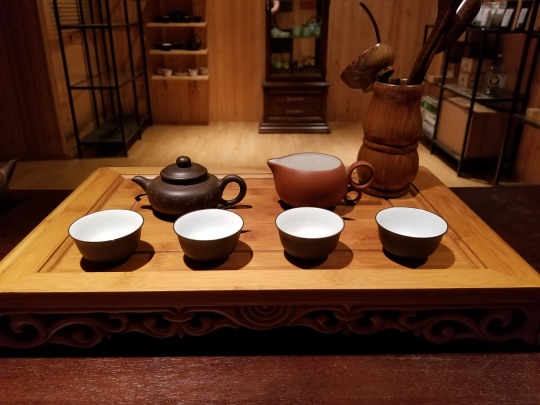
With my new 30th birthday gongfu tea set coming in the next few weeks I thought it was finally time to touch upon this traditional method of brewing, in anticipation for the unveiling of the new set. Stay tuned for more!
10 notes
·
View notes
Text
The Legend of the White Snake (2019) Final Review
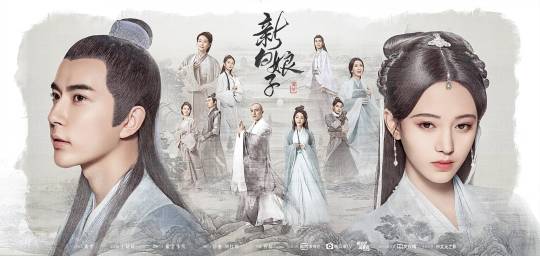
It is time for my thoughts on the last twelve episodes of the series and my final review. Upfront not much in my opinion has changed, I maintain my position of highly recommending giving this drama a watch. Full spoilers and the disclaimers noted in the first impression of course still apply.
The best way overall to experience the drama in my personal opinion is to set aside a long weekend and binge it in a short amount of days. That is what I felt was best after binging the first twelve episodes in one day, spacing out the middle part and ending up binging the last twelve again.
Delving into the last portion of the story, the plotline with Xu Jiaorong has been resolved rather quickly and with a slight Deus Ex Machina as well. On the one hand it felt a bit shallow due to that, but on the other it didn’t drag things out. It seemed essentially like a last confirmation that Bai Suzhen and Xu Xian have proven themselves more than enough and are fine with each other now. The Mind Demon later taking advantage of Xu Jiaorong I wouldn’t consider a conflict with her but fully with the Mind Demon, especially since she doesn’t remember anything afterwards and clearly hadn’t been in control.
As expected the Prime Minister was not done yet. Though he got his comeuppance rather swiftly too and in the same breath Xu Xian got some closure from his parents, which was very nice to see.
An important mention to me is Li Gongfu, who has proven a wonderful husband and support character throughout the entire series. He could have easily taken the lead during certain disputes between his wife and brother-in-law, but he did not as it was not his place yet he was always there in case he was needed, very respectful just an overall great guy.
One of the best character developments I’d ascribe to Fahai. By the end he has learned that demons can indeed be good too! From little ones helping him in his time of need no less and he repaid them by essentially taking them in, which was so cute. In general there are a couple of good character arcs throughout the series which stick and have noticeably lasting effects. Yet even after their arc is technically completed the character is still clearly around and doesn’t just vanish or gets completely relegated to the background, but instead remain present.
Xiao Qing continues to be very relatable and reading ever so queer to me. If there weren’t so many great characters in this that makes it hard to choose especially for someone as generally indecisive as me, she would be my favourite among them.
The third fourth of the series became mostly Xiao Qing’s story after building it up here and there throughout the previous arcs. Including wrapping up any lose plot threads by the end as well minus those last few big ones in the finale. It was nice to see the main couple become the supporting characters for a while too, something like this can really bring out a new side of someone or reinforce existing aspects of them.
I am quite pleased with Xiao Qing and Zhang Yutang’s romantic storyline not having a happy end as such and not just because I personally see her as someone more befitting of a less traditional style of relationship. It is a good contrast to the main couple and illustrates that even if romance doesn’t work out for you that don’t mean you don’t have love and support in your life regardless. Yeah, a breakup like this will hurt, but it won’t be the end of the world and doesn’t mean you can’t still find happiness. Also it was a good show of a possible alternate ending that easily could have happened to Bai Suzhen and Xu Xian as well.
At the end I was also very happy for Xiao Qing not only making up with her father, but also becoming a dragon!
Applause for Jingsong getting basically the precise kind of reward I was envisioning for him when he first sacrificed himself. It wasn’t enough to get reinstated as a student under Buddha, but he did get a do over and even help Bai Suzhen one more time!
Now for the last and arguably most longstanding antagonists. Jin Ruyi has come to her senses in the end and done as best she could in the moment to fix things as much as possible. I would not say she got redeemed though, there was too much bad she has done at that point that one last ditch effort just cannot make up for. She should get another chance in another life, but that she didn’t continue with this one might have been for the best for everyone including her.
Wao Daoling, while showing some signs of obsession whenever he tried to eliminate Xu Xian, did as I see it truly love Jin Ruyi, which turned out both complimentary as well as opposite to her. And she did realize that he genuinely loved her after all. The dubious consent situation I’ll generously attribute to the Mind Demon and his schemes with Wao Daoling genuinely having believed that Jin Ruyi was okay with it.
As a little treat I would like to showcase how the costuming brought their A game during the finale. Everyone is serving looks!
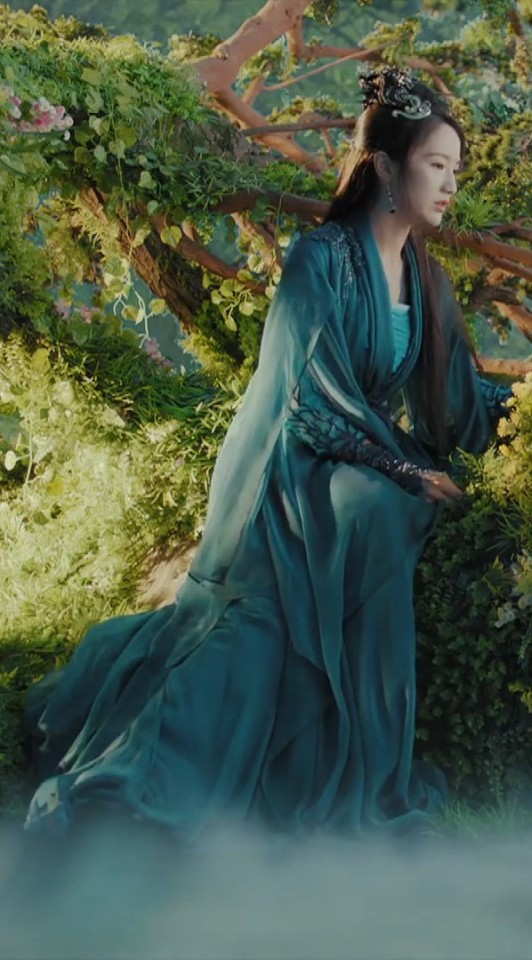
Xiao Qing with a very pretty darker greenish blue and jewellery that alludes to shimmering scales or straight up is in the form of snakes.
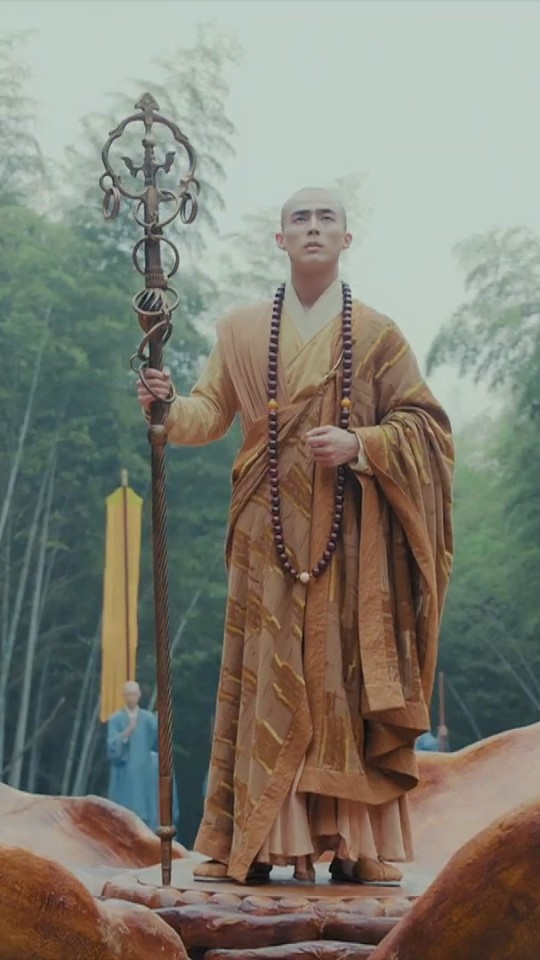
Fahai in the fanciest getup we have seen him in yet. He is ready to eliminate demons and look fantastic while doing so.

You have to give the Mind Demon credit for his sense of fashion in my opinion. That headpiece is great!
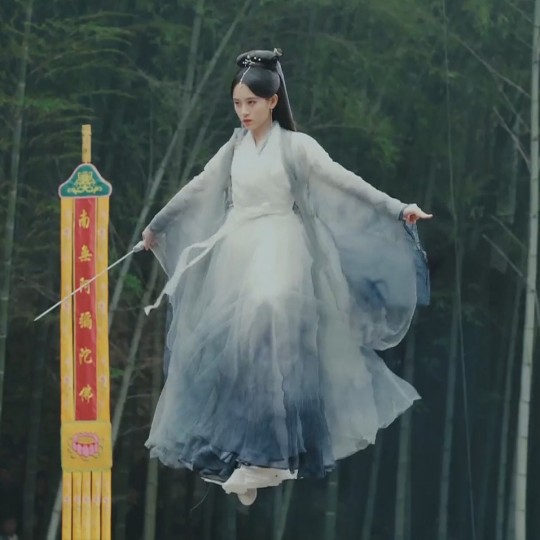
And Bai Suzhen having her outfit changed to darker colours towards the edges matching her husband's, but still being pure white in the center, a great outward visualization of her character in this situation.
Generally it is also nice seeing characters previously shown almost exclusively wearing light colours donning some darker ones.
Last but not least the bigger picture and my opinion on the drama as a whole.
There are some instances where just explaining things upfront could have helped resolve a conflict sooner. And with others perhaps just requesting some help from Guanyin again would have done well, after all I believe at worst she would have just left them on read. But overall the story wasn’t driven too much by unnecessary misunderstandings.
The story as a whole was paced very well, building up conflict consistently and resolving them bit by bit in a rewarding manner, but it was never done in a way where it really felt like the story could have ended then and there as there was always another plot thread unresolved and keeping hold of your interest. Each point of suspense and mystery has a reasonable beginning, never overstayed its welcome and had a satisfying conclusion.
Sometimes it did feel like every conflict was a bit isolated and while the focus was on one in particular the others were put on the backburner without really interacting, even though that would have been logical since people and their issues don’t just vanish and reappear when it is convenient. This was particularly noticeable since the conflicts in the beginning were woven into each other quite well.
An exception here would be the prolonged absence of the Prime Minister, which can be somewhat explained by Xu Xian having been believe to be dead for a while and nothing notable to the Prime Minister happening around him until the Mind Demon spurred him on once more. But those are relatively small complaints that didn’t hamper my enjoyment at all.
Most pleasing to me was that everything had a setup and every setup has paid off in some way. If there was an exception to this I did not take note of it. Additionally only few things felt a little plot convenient and even then usually had some understandable reasoning behind them. The rest one might be able to attribute to karma. I’m personally not really one for destiny in such a rigorous way, but I can get behind karma and for example connections forged in a previous life.
An example to highlight when it comes to setup and payoff would be the two demons in the early part of the story, who together with illustrated well that there are good and bad demons and even that there is nuance as well in the case of the mother and the centipede demon which came around big time at the end when both Xiao Qing and Bai Suzhen became aggressive out of desperation and anguish. And the final foe being a demon of human creation was simply excellent.
Needless to say after my initial impression I was not disappointed whatsoever. Highly recommend this series for everyone whether you are a romance or drama enthusiast, interested in legends or what have you! Really just if you are an enjoyer of a good series and even have half an interest in this one.
#The Legend of the White Snake#新白娘子传奇#Bai Suzhen#Xu Xian#Xiao Qing#Xu Jiaorong#Li Gongfu#Zhang Yutang#Fahai#Jingsong#Jin Ruyi#Wao Daoling
1 note
·
View note
Text
Night Wanderer (夜旅人) - Upcoming Chinese Drama

"Night Wanderer" is a fantasy love drama that travels through time and space, based on the novel with the same name by author Zhao Xizhi. On the summer night of Shanghai in 2021, Zong Ying, a forensic expert, bumped into an unexpected visitor named Sheng Qing Rang at home. He said that he was also the owner of the apartment No. 699. He came to modern times every night from 1937, and then went back to his era in the early morning. Zong Ying, who has always been rational, thought it was nonsense, but when Sheng Qing Rang disappeared in front of her, she had to begin to accept this fact. From the accident at the beginning to the initiative later, with Zong Ying and Sheng Qing Rang going back and forth between two eras, the two people with emotional restraint gradually changed from friends to confidants and finally lovers in the storm of self and family, peace and war.
However, with the outbreak of the Battle of Shanghai, Sheng Qing Rang’s future is overshadowed by death, and staying together has become an unattainable luxury. Zong Ying was not afraid of life and death, and was determined to face the doomed history with Sheng Qing Rang. In the flames of war, two people who do not belong to the same time and space become the most important footnotes in each other's lives.
----------
What makes this drama interesting is they play through the unique setting of two time and space that can communicate in both directions (Republic of China era and modern era), so that two people who have been forgotten by love are tightly intertwined. Under the dual-line parallel narrative rhythm, Sheng Qing Rang and Zong Ying's mutual redemptive love is romantically presented in the long river of years. A lot of the places that appeared in the original novel actually exist in real life and the place is still exist until nowadays such as the apartment No. 699.
---------
Productions
Director: Wan Li Yang (万里扬) Screenwriter: Chen Mao Xian (陈茂贤) Executive Producer: Zhang Jia Lu (张家鲁) Chief Producer: Li Li Ying (李莅樱) [iQIYI] Producer: Gong Yu [iQIYI], Jia Xiao Xiong [Gongfu], Wang Xiao Hui [iQIYI], Chen Kuo Fu [Gongfu], Chen Li Dong [Yongle Film and Television] Art Director: Shao Chang Yong Costume Designer: Shirley Chan, Fang Si Zhe Production Company: iQIYI, Yongle Film & Television Production, CKF Pictures (Gongfu)
5 notes
·
View notes
Note
What's princess Iron fan the goddess of?? I wanna know her origins. From her childhood to how she met Ox king.
She’s known as both Iron Fan Goddess and Goddess of HuoYan Shan (translates basically to Fire Flame Mountain? there’s probably a better translation but I’m going off my own knowledge)!
She’s not so much a goddess as in a “proper” celestial one, but rather she’s made the villagers living near HuoYan Shan yield to her and offer her food and stuff like a goddess. Unfortunately, not much is known about Iron Fan Princess ): All that’s really known is that she married Bull Demon King and is Red Boy’s mom. It’s mentioned that she achieved immortality but doesn’t really go into specifics. Most people assume she’s a demon or spirit who cultivated Daoism, like Wukong!
But… If you wanna know my personal interpretation, I’ll put headcanons *fingerguns* under the cut cuz I don’t wanna clog up anyone’s dash.
Inherited the Bajiao Fan from her mother
Wanna say her mom was a really powerful immortal who was gifted the Bajiao Fan by some god
But then her mom screwed up somehow (minor? major? i dunno Heaven wanted to stab Wujing everyday cuz he broke a lamp) and Heaven was like, “oof now when you have a child, they’ll be a demon”
Has had formal combat training focusing on swords, also has hella strong nei li (inner strength) and gongfu
Was classmates with Bull Demon, studied and cultivated Daoism under the same sifu together
Probably was also a strong, powerful, and respected force among demons, Wu Cheng’en was just blinded by Confucianism and that’s the tea :/
She’s probably already established herself as the Goddess of HuoYan Shan before even meeting Wukong
Going off that, she probably met Wukong with Bull Demon, when Wukong swore brotherhood and alliances with the other demon kings
SHE, WUKONG, AND BULL DEMON WERE AN UNSTOPPABLE TRIO
Because I love friend group dynamics and also angst for later on:
Those three were the closest out of the demon squad
They sparred together and wraught havoc upon villages
Lots of adventuring together!! Bantering!! Teasing!!
Yeah given how insanely OP Wukong is, I’d like to credit Iron Fan and Bull Demon’s ability to hold their own in a fight against him to having a familiarity with his fighting style
The three of them share three braincells and Iron Fan has two of them for most of the time
This is when crushes develop :3c
Wukong erased Iron Fan and Bull Demon’s names from the death books
Wukong probably also slipped them a few immortality peaches during the Havoc
That all being said- She and Bull Demon were probably as distraught as the HuaGuo Shan monkeys when they heard what happened
Bull Demon coped by being like, “Eh, it’s our bro Sun Wukong. This is probably an elaborate prank or he’s planning something. He’s gonna be fine.”
Iron Fan however was like, “Well I’m just gonna forget now.” and pushes all her feelings under a rug
They both continue to grow their power in the meantime
She and Bull Demon got married 200 years after the incident cuz Red Boy’s said to be 300 years old by the time Wukong encounters him
Was probably a doting mom and loved Red Boy to bits
But was also a bad influence and gave him all the weapons he could ever want as playthings
Her and Bull Demon’s relationship probably got strained around the time Red Boy was 200 because Bull Demon started making bad decisions
I don’t think the book ever mentioned Iron Fan ever showing malicious jealousy towards Jade-Faced Vixen and Jade-Face sends her gifts to make amends so I don’t think they’re enemies
The majority of the strain is coming from Bull Demon wanting more, more, more and wanting to be an even more powerful king
Which included having another consort because :/ Tang Dynasty- and Iron Fan, as most reasonable people, was pretty pissed at this line of thinking
Iron Fan, although pretty ambitious and glory-chasing and power-hungry herself, was getting frustrated with how brute-force Bull Demon was starting to go about it
Afterall, Wukong was the strategist in their plans and Bull Demon was starting to lose sight of what made their old plans work
They also started seeing each other less and less and Iron Fan got disheartened because it seemed like Red Boy enjoyed hanging out with his dad more
She started getting even more pissed because she worried Bull Demon would be a bad influence for the kid
Which led to her trying to steer Red Boy away from his dad which made Bull Demon mad which made their relationship more strained
Iron Fan and Bull Demon probably still had some feeling left for each other and were sad with how their relationship was progressing but with the place they were in and the roads they were taking, they weren’t a good match for each other at that time
So when Iron Fan hears about Wukong being back and what he did to Red Boy…. oh boy
All hell breaks loose
#asks#anonymous#journey to the west#jttw#iron fan princess#GOD i wanna make my own adaptation#havent read through any of this because I am lazy#iron fan just has so much potential!!!!! people gotta stop delegating her to just the angry wife/mom role!!!!#just because wu cheng'en made a bad take doesnt mean you have to!!!!!
68 notes
·
View notes
Text
Kung Fu Movies Every Movie Lover Should See At Least Once

Kung fu has become essential to American cinema. Modern action films like The Matrix and Kill Bill rely on many of the same styles and principles of martial arts that many Americans first saw in the films of Bruce Lee and Jackie Chan.
Kung fu has become essential to American cinema. Modern action films like The Matrix and Kill Bill rely on many of the same styles and principles of martial arts that many Americans first saw in the films of Bruce Lee and Jackie Chan.
Though kung fu movies feel so familiar to modern audiences, it wasn’t until the 1970s that kung fu movies really made their way to the United States and Americans fell in love with Chinese martial arts films. The late Bruce Lee in particular captured America’s imagination, as his intense, powerful skill captivated audiences following his untimely death at the age of 32.
Of course, if you want to learn more about the great stars of Chinese kung fu, Lee, Jackie Chan, and Jet Li, these films will give you that exposure. But, a deep dive into Hong Kong martial arts films will also yield a deeper appreciation of Chinese culture, Asian history, and the evolution of action film. Perhaps most importantly, these films offer some of the most intricate and impressive fight sequences ever filmed. It wouldn’t be inaccurate to call these films violent, but when kung fu movies are at their best, the violence transcends to a level of physical beauty that is unlike anything else ever captured on the big screen.
Kung Fu is indeed a style of martial arts, but it transcends simply one definition and extends as well to a lifestyle that one chooses. There are those who interpret it as Kung – hard/ or skillful work, and Fu – time spent. Over a very long period of time, Kung Fu (or Gongfu) has come to generally define one who devotes oneself to a lifestyle of martial arts, or more specifically a Chinese martial art. This is why the martial arts movies we will talk about today are all considered Kung Fu films, and also why you won’t see any movies with Karate here like Karate Kid.
The Hell's Wind Staff 1979 Dvd

Actors: Hwang Jang Lee, Meng Yuen Man, Meng Hoi, Jason Pai Piao
Format: Dvd
Language: English, 5.1 Surround Sound
Run Time: 85mins
Region: Region-Free Playable Worldwide
Extras: None
Plot: Two young kung fu experts are terrorized by an evil warlord whose weapon is known as the Hell's Wind Staff. With the aid of an old rival of the warlord, they train in the Dragon Hands and the Rowing Oar to face off against the deadly Hell's Wind Staff.
Shaolin Iron Claws 1978 Dvd
https://vimeo.com/583597423
Actors: Wong Tao · Yi-Min Li · Sing Chen · Yi Chang · Chi-Ping Chang · Chung-Kuei Chang · Ji-Lung Chang · Pao-Shan Chang
Format: Dvd
Language: English, 5.1 Surround Sound
Run Time: 85mins
Region: Region-Free Playable Worldwide
Extras: None
Plot: During a changeover in China to constitutional government, regional warlords and chiefs use the confusion to rebel against the new government. One honorable chief refuses and leaks a secret ciphered document outlining the warlords plans to local police. A shady thug working for the evil warlord faction hires the aid of two young brother scoundrels to assist in ruining the reputation of the towns police chief, Hu, who has come in possession of the leaked document. The scoundrel's sister, Ms. Poon, is in love with Hu and the brothers unwittingly work for the thugs for the sake of helping their sister. Meanwhile, the warlords have sent assassins to kill anyone who may have seen the document and end up killing the killing the girlfriend of Hu's best friend. The best friend returns and aids Hu to find those whom the document belongs. Hu then proceeds to manufacture situations and events that will lead him directly to the traitors and find all involved.
5 Pattern Dragon Claws 1983 Dvd

Actors: Ryong Geo, Jang-Lee Hwang, Ui-jeong Choi, Hwang-ki Baek
Format: Dvd
Language: English, 5.1 Surround Sound
Run Time: 95mins
Region: Region-Free Playable Worldwide
Extras: None
Plot: The Silver Fox batters untold men with his deadly Thunder Foot Technique and rules supreme in the martial world, until a young fighter develops the Lightning Mantis Strike.
Crippled Kung Fu Boxer 1981 Dvd

Actors: Cliff Lok, Tsai Hung, Yueh Hua, Sun Yueh, Goo Chang, Lee Chiu, Chu Siu-Wa, Ma Chin-Ku
Format: Dvd
Language: English, 5.1 Surround Sound
Run Time: 90mins
Region: Region-Free Playable Worldwide
Extras: None
Plot: Kung fu genius (Cliff Lok) stars as the student of a famous kung fu master whose kung fu gym gets overrun by the Hunchback and his gang, Cliff runs off and seeks refuge with his uncle, who teaches Cliff the art of the Crippled Fist so he may take revenge of the Hunchback and the rest of his vile posse.
Heroes Two 1974 Dvd
https://vimeo.com/641782866
Actors: Kuan Tai Chen, Sheng Fu, Hsin Fang, Hark-On Fung
Format: Dvd, Remastered
Language: English, 5.1 Surround Sound
Run Time: 93mins
Region: Region-Free Playable Worldwide
Extras: None
Plot: When the Ching attack the Shaolin temple, Hung manages to escape, but soon ends up in prison after being mistaken for a bandit. Fang now has to help Hung escape so that they can join forces against the evil Ching.
Phantom Kung Fu 1979 Dvd
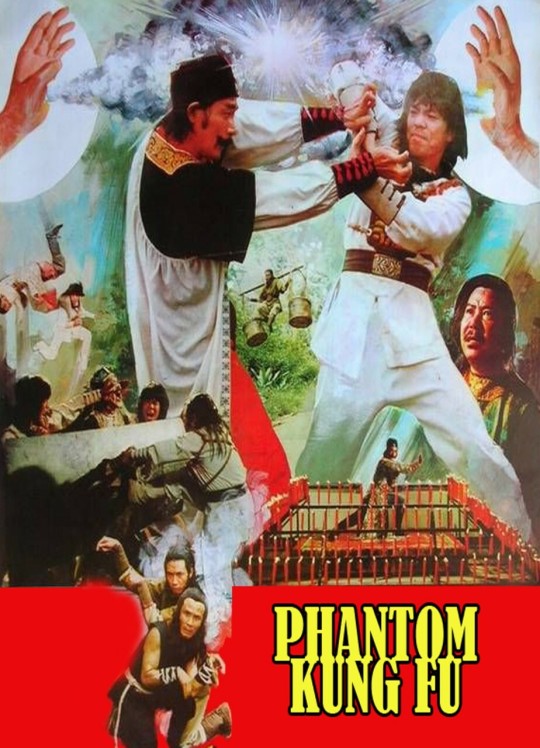
Actors: Wong Tao, Yi Chang, Chung-Kuei Chang, Ping Chang.
Format: Dvd
Language: English, 5.1 Surround Sound
Run Time: 91mins
Region: Region-Free Playable Worldwide
Extras: None
Plot: The master of a lethal technique is hired by the Qing government to collect a rebel leader's manuscript and kill anyone who gets in his way. To accomplish his goal, he must vanquish a rebel group intent on toppling the Qing and restoring the Ming.
Disciples of Shaolin 1976 Dvd

Actors: Alexander Fu Sheng, Chi Kuan Chun, Kong Do, Lo Dik, Stephen Yip Tin Hang. Chen Ming Li
Format: Dvd, Remastered
Language: English, 5.1 Surround Sound
Run Time: 106mins
Region: Region-Free Playable Worldwide
Extras: None
Plot: Impetuous young martial arts master Kuan takes a job at a textile factory where another disciple of the revered Shaolin discipline warns him about the rival Manchu clan, who run another nearby mill.
The Blade (1995) Tsui Hark Film

Actors: Wenzhuo Zhao, Xin Xin Xiong, Sonny Su, Valerie Chow
Format: Dvd, Remastered
Language: English, 5.1 Surround Sound
Run Time: 95mins
Region: Region-Free Playable Worldwide
Extras: None
Plot: This is Tsui Hark take on Shaw Brothers classic 'The One Armed Swordman'.
After the master of the Sharp Manufacturer saber factory abdicates and appoints On, his least popular worker, as his successor, On, unwilling to lead his surly colleagues, embarks on a quest of revenge to kill the evil, flying, tattooed kung fu master who killed his father.
Drunken Master Slippery Snake
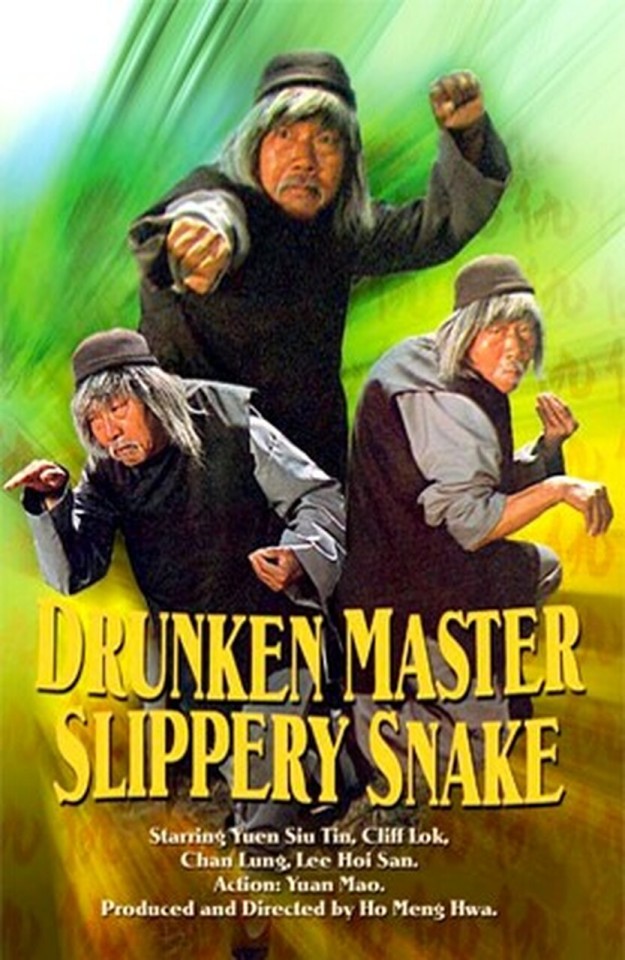
Actors: Cliff Lok, Siu Tin Yuen, Hoi Sang Lee, Lung Chan
Format: Dvd
Language: English, 5.1 Surround Sound
Run Time: 81mins
Region: Region-Free Playable Worldwide
Extras: None
Plot: Sam the Seed takes kung fu genius Cliff Lok as his newest pupil and teaches him the beggar fist in order to prepare him for a death duel with an archenemy, the Bald Headed Dragon.
7 Commandments of Kung Fu (1979) Dvd
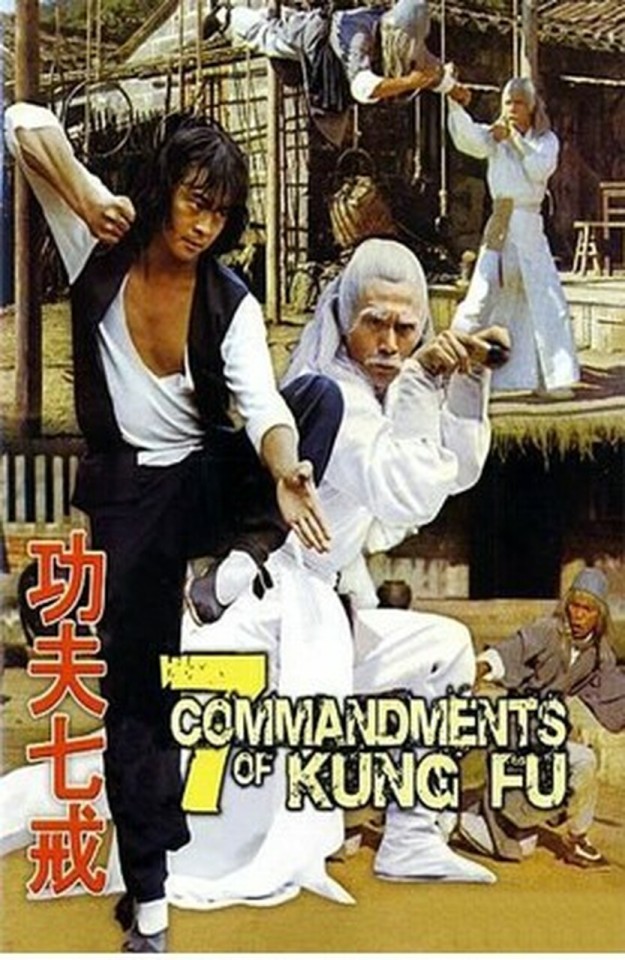
Actors: Yi-Min Li. With Chung-Kuei Chang, Yi Chang, Kuo Chung Ching, Hou-Tao Hsiao
Format: Dvd
Language: English, 5.1 Surround Sound
Run Time: 84mins
Region: Region-Free Playable Worldwide
Extras: None
Plot: An old Kung fu master and Assassin adopts a new disciple and teaches him the mantis kung fu in the hope his new protege will continue his killing for him.
0 notes
Text
Steeped in Tradition: Gongfu Tea Set vs. Chinese Tea Set
In the realm of tea culture, the manner of brewing and serving is as pivotal as the leaf itself. Among the various traditions, the Gongfu tea set and the general Chinese tea set stand out, each representing a different philosophical and aesthetic approach to tea enjoyment. These sets are not just tools but symbols of cultural values and historical depth, reflecting centuries of refinement and social evolution.
The Art of Precision: Gongfu Tea Set
The Gongfu Tea Set is the epitome of meticulous tea brewing. Originating from the Fujian and Guangdong provinces, this method is a ceremonial embrace of the complexities of tea, focusing on the precision and ritual of preparation. The Gongfu set includes several pieces - a small teapot, multiple cups, a brewing tray, and often additional tools like a tea strainer, a tea scoop, and a tea towel. Each component has a specific role, ensuring that the act of tea making becomes a deliberate, meditative practice.
Brewing with a Gongfu set is an intimate, detailed process where aspects such as water temperature, tea quantity, steeping time, and the sequence of pours are carefully controlled. This method is particularly favored for oolong and pu-erh teas, whose flavors and aromas can evolve through multiple infusions, revealing depth and complexity that a more straightforward brewing method might miss. The Gongfu tea ceremony is not just about drinking tea; it's about experiencing tea, with each small cup inviting you to taste changes and nuances.
The Harmony of Simplicity: Chinese Tea Set
In contrast, the Chinese tea set, commonly used across various regions, embodies the principle of graceful simplicity and functionality. Typically, this set might include a larger teapot and several matching cups, often beautifully crafted but with fewer components than the Gongfu set. The focus here is on the communal experience of tea drinking, catering to family or group gatherings, where tea acts as a facilitator of conversation and togetherness.
The brewing process with a Chinese tea set is straightforward, emphasizing less on ritual and more on ease and accessibility. It accommodates a broad range of teas—from green to black—and reflects a more relaxed, albeit respectful, approach to tea culture. The essence of using a traditional Chinese tea set lies in its ability to bring people together, creating a shared experience that is both nourishing and unifying.
Cultural Reflections and Sensory Journeys
Choosing between a Gongfu tea set and a Chinese tea set often depends on the context of the tea drinking occasion. For solo sipping or small, focused groups where the goal is to deeply engage with the tea's flavor profile, the Gongfu set is ideal. Conversely, for family meals or casual gatherings where tea serves as a backdrop to social interaction, the Chinese tea set is more appropriate.
Conclusion: More Than Just Tea
The contrast between the Gongfu tea set and the Chinese tea set is a reflection of the diverse approaches to life and leisure found within Chinese culture. One emphasizes the artistry and depth of flavor in each leaf, turning tea preparation into a reflective ritual, while the other celebrates community and simplicity, making tea accessible and enjoyable for everyone involved.
These sets do more than just brew tea; they brew experiences, steeped in centuries of tradition, offering insights into the philosophical and social fabric of Chinese society. Whether it's the detailed artistry of the Gongfu ceremony or the communal warmth of a simple tea set, each method provides a pathway not just to great tea, but to greater understanding.
0 notes